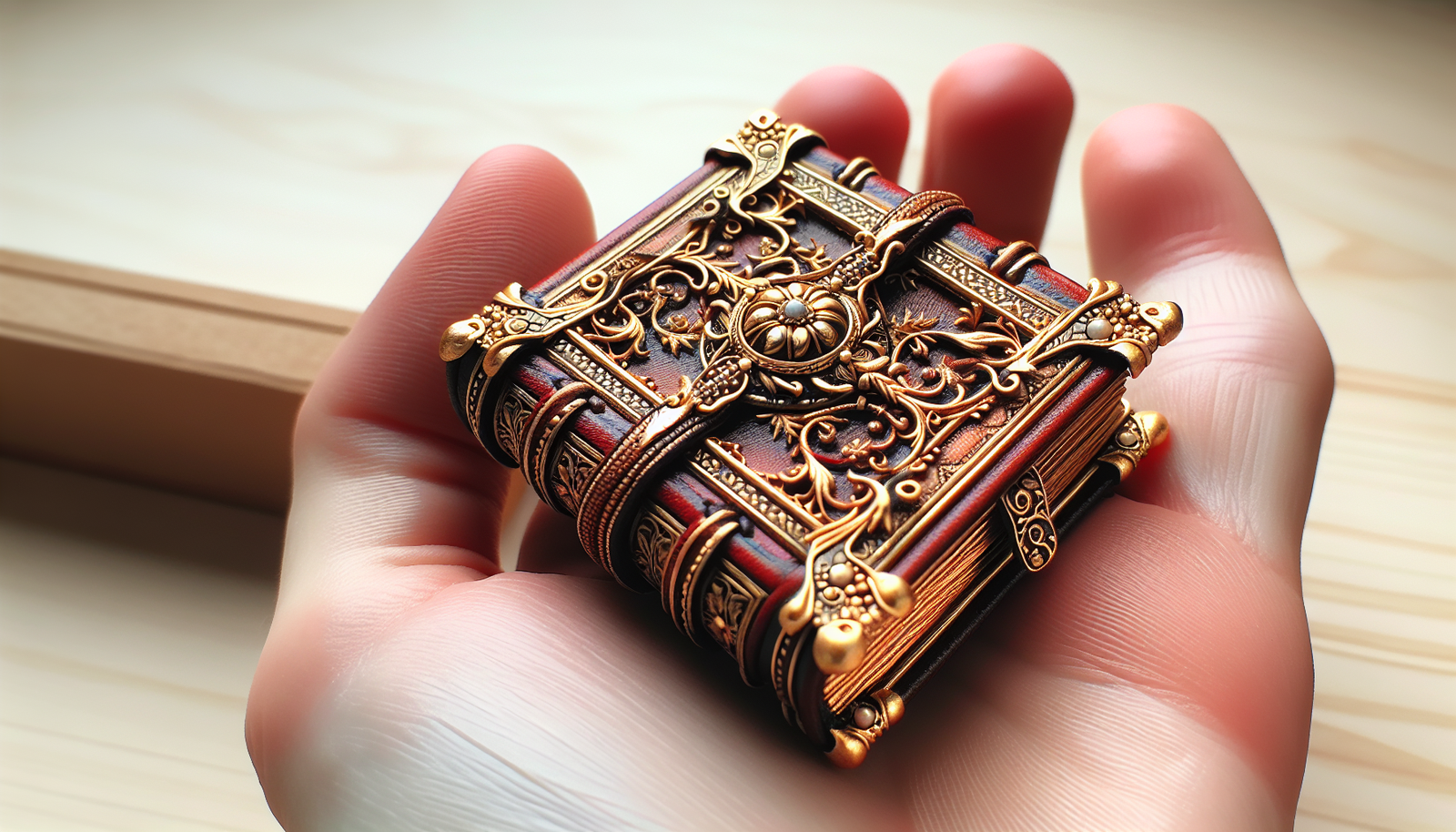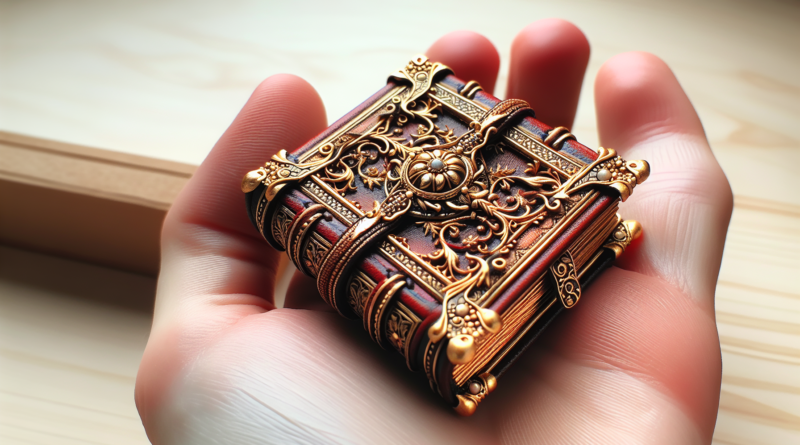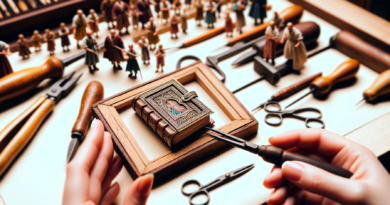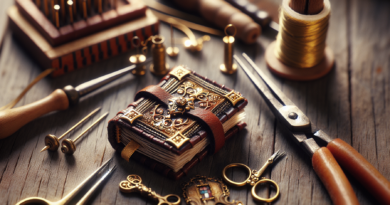Miniature Bookbinding
Have you ever marveled at the intricate beauty of a miniature book? The art of miniature bookbinding is a captivating skill that brings together the precise craftsmanship of bookbinding with the delicate intricacy of creating tiny works of art. From hand-stitching the pages to crafting intricate covers and spine designs, miniature bookbinding is a labor of love that results in enchanting treasures that fit in the palm of your hand. This article will explore the fascinating world of miniature bookbinding and the dedication required to bring these tiny literary masterpieces to life.
Miniature Bookbinding
Welcome to the world of miniature bookbinding! In this comprehensive article, we will explore the art of creating tiny, beautifully crafted books that showcase incredible attention to detail. Whether you are a book lover, a craft enthusiast, or simply looking for a new hobby, miniature bookbinding offers a fascinating and rewarding experience.

Overview
Miniature bookbinding refers to the creation of small-scale books, typically measuring no more than a few inches in height. These tiny books are often created as collectors’ items, gifts, or decorative pieces. Despite their small size, miniature books still preserve the art of traditional bookbinding, including techniques such as sewing, gluing, and covering with decorative materials. The intricacy and precision required for miniature bookbinding make it a unique and specialized craft.
History
The history of miniature bookbinding dates back centuries, with early examples found in ancient civilizations such as Egypt and Greece. However, the art truly flourished during the Renaissance period, when miniature books became popular among the European aristocracy. These tiny books were often intricately illustrated and bound with exquisite materials such as velvet or leather. Today, miniature bookbinding continues to be admired for its historical significance and aesthetic appeal.
Techniques
Miniature bookbinding involves a range of techniques that contribute to the creation of a beautifully crafted book. These techniques include sewing, gluing, folding, and covering. Sewing is used to bind the pages of the book together, ensuring their durability. Gluing is essential for securing the covers and decorative elements to the book. Folding techniques are employed to create the desired structure and layout of the pages. Finally, covering techniques involve selecting and attaching materials such as leather, fabric, or paper to the covers of the book.
Materials
The choice of materials is crucial in miniature bookbinding, as they greatly contribute to the overall look and feel of the book. Common materials used in miniature bookbinding include fine papers, fabric, leather, vellum, and decorative elements such as ribbons, beads, or miniature charms. To ensure the longevity of the book, acid-free and archival-quality materials are recommended. Additionally, miniature bookbinders often experiment with unconventional materials, such as miniature botanical specimens or delicate hand-painted illustrations, to add a unique touch to their creations.

Tools
A variety of specialized tools are utilized in miniature bookbinding to achieve precision and accuracy. These tools include needles, thread, bone folders, awls, cutting mats, rulers, and specialized bookbinding adhesives. A bookbinding press is also essential for holding the book together during the binding process. While some tools used in miniature bookbinding are similar to those in traditional bookbinding, others are specifically designed for working with small-scale books.
Process
The process of miniature bookbinding can be broken down into several key steps. First, the bookbinder designs the layout of the book, considering factors such as page size, structure, and the overall aesthetic. Next, the pages are assembled and sewn together using traditional bookbinding techniques. Once the pages are secured, the covers are created and attached to the book. This involves cutting, folding, and covering the covers with the chosen materials. Finally, the finishing touches, such as decorative elements or personalization, are added to give the book a unique and personalized feel.
Challenges
While miniature bookbinding is a rewarding craft, it also comes with its own set of challenges. The small size of the books requires meticulous attention to detail and precise handwork. Working with delicate materials can also be challenging, as they can tear or warp easily. Additionally, creating miniature illustrations or designs that are clear and visible on such a small scale can be difficult. However, with patience, practice, and a steady hand, these challenges can be overcome, resulting in stunning miniature books.
Applications
Miniature books have a wide range of applications, making them a versatile craft. They can be used as decorative pieces in dollhouses or miniature scenes, adding a touch of realism and charm. Miniature books also make unique gift ideas, showcasing thoughtfulness and craftsmanship. Some collectors specialize in collecting miniature books, appreciating the artistry and historical significance behind each piece. Others may create miniature books as part of an artistic project or to commemorate a special occasion.
Tips and Tricks
To achieve the best results in miniature bookbinding, here are some helpful tips and tricks to keep in mind. Firstly, practice proper hand positioning and control, as this is crucial for working with small-scale materials. Be patient and take your time to ensure precise and accurate measurements. Consider investing in high-quality tools and materials from reputable suppliers, as this will greatly enhance the overall quality of your miniature books. Lastly, don’t be afraid to experiment and incorporate your own creative flair into your creations!
Conclusion
Miniature bookbinding is a captivating craft that combines the beauty of traditional bookbinding with the charm of small-scale creations. Creating miniature books allows you to explore your creativity and showcase your attention to detail. Whether you are a beginner or an experienced bookbinder, the art of miniature bookbinding offers endless possibilities for artistic expression. So why not embark on this delightful journey and start creating your own miniature masterpieces today? Happy binding!




